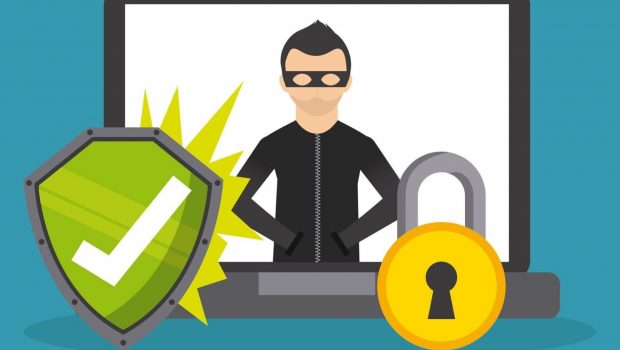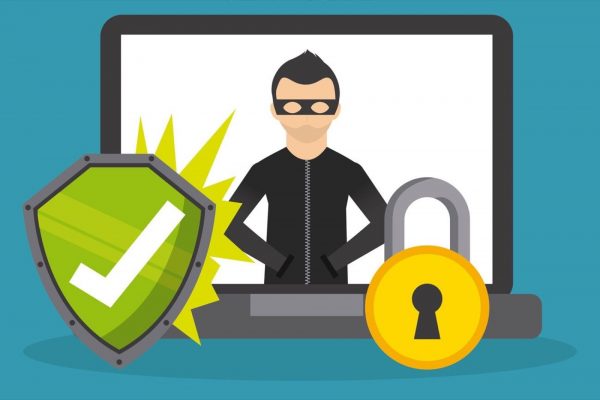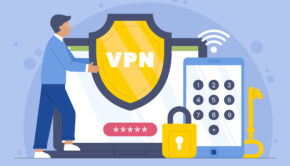7 ways to secure your company’s data
Changing work styles have given rise to several new threats to data security. Nearly every organization is concerned about the security of its data with regard to employee information, client payment data or business plans. Although network security sounds like a simple idea to understand, there have been numerous occurrences of data breach nowadays. It has become a daunting task, particularly for small- and medium-sized companies, which have to compromise with network security measures due to strict cash flow.
To protect sensitive information against malicious agents, it’s vital to take these significant steps.
1. Educate employees about malware and ways to prevent it
With the Bring Your Own Device (BYOD) trend gaining traction, employees can easily work from their devices like laptops, smartphones and mobile devices within the office premises. However, the dearth of encryption on their devices or an outmoded operating system may lead to data leak. Malware can also find their way into the corporate network through insecure mobile devices. Therefore, employees ought to be educated on expected network security practices right at the time of onboarding. An idea about phishing emails should be provided beforehand, and they also need to be watchful of how they are using public file-sharing applications like Drobox, OwnCloud and JungleDisk.
2. Frame a BYOD policy
The tendency of BYOD helps organizations enhance the output in a cost-effective manner, but it also opens the door for unlawful access to delicate information. Therefore, it’s a good practice to keep a stringent BYOD policy in mind, which will help keep sensitive information securely in employees’ personal devices. Some security guidelines must be followed when using personal device within an office premises. Security measures like software installation and configuration must be implemented, and support for software updates, upkeep and troubleshooting should be provided.
3. Create a strong policy for dealing with sensitive data
An organization ought to correctly separate between its sensitive and non-sensitive data to outline a stringent process for handling important information. Business data can be categorized into public, private and restricted, and security measures can be implemented accordingly. While public data needs nominal security, private data should be dealt with carefully. In the event of restricted data, employees ought to be given access on the need-basis only. Browse resources about information security policy to create a well-built policy and guidelines regarding organizations’ sensitive data.
4. Encode your data for safety
All organizations must secure data within the corporate network, be it SMBs or big enterprises. While they are assuming numerous security measures to prevent unauthorized access to their data in rest, an equal security measure is essential for shielding the data in motion. Since all types of individuals and applications access the sensitive data, it should be encoded for a secure data networking.
5. Focus on password security
While assuming diverse network security devices, companies often end up disregarding the basic information security errors. In most situations, employees use weak passwords to shield data in their system, which makes them vulnerable to malicious attacks. Therefore, it is imperative to improve password security practices by providing enhanced security training to employees. Organizations can also take advantage of the rollout of a password management application.
Related Reading: 2019’s Top 6 Security Tips for Mobile Application to Avoid Security Threats
6. Be aware to avoid data breach
To avoid data breach, employees should take certain preventive measures such as not leaving their laptops and devices unattended. And in case of lost device, the holdup needs to be reported instantly. They also need to take a practical approach to ensure that the data on their devices are encoded. These measures can help watchful employees make an important contribution to minimizing the possibility of data breaches.
7. Make a plan to survive data breach
With cybercriminals developing innovative ways to encroach upon the network of an organization, a failsafe protection against data breach is implausible. Even with extensive cognizance and comprehensive security measures, it’s hard to create a dependable network security structure. If the sensitive information of an organization has been affected, it should adopt a strategic approach. Once the data lost in security breach is planned, the next step should be to change all affected passwords and contact credit-reporting agencies and related financial institutions.
Conclusion
To prevent unlawful access to high-end data, an organization-wide security practice should be adopted. In many situations, cyberthieves tend to aim high-profile members and company executives because they are likely to have access to all important information. Organizations end up compromising the security of their data by providing greater independence to high-profile staff. The best practice is to flawlessly develop equal security measures for everyone in an organization. To prevent the occurrences of malware and ransomware attack, it’s imperative that every employee is aware of security practices and abide by them abidingly. A culture of security cognizance can facilitate an important change in noticing and thwarting potential security threats.












![How to make your Facebook chatbot charming [Infographic]](https://technofaq.org/wp-content/uploads/2018/10/A-Small-Business-Guide-to-Facebook-Chatbots-150x150.png)




